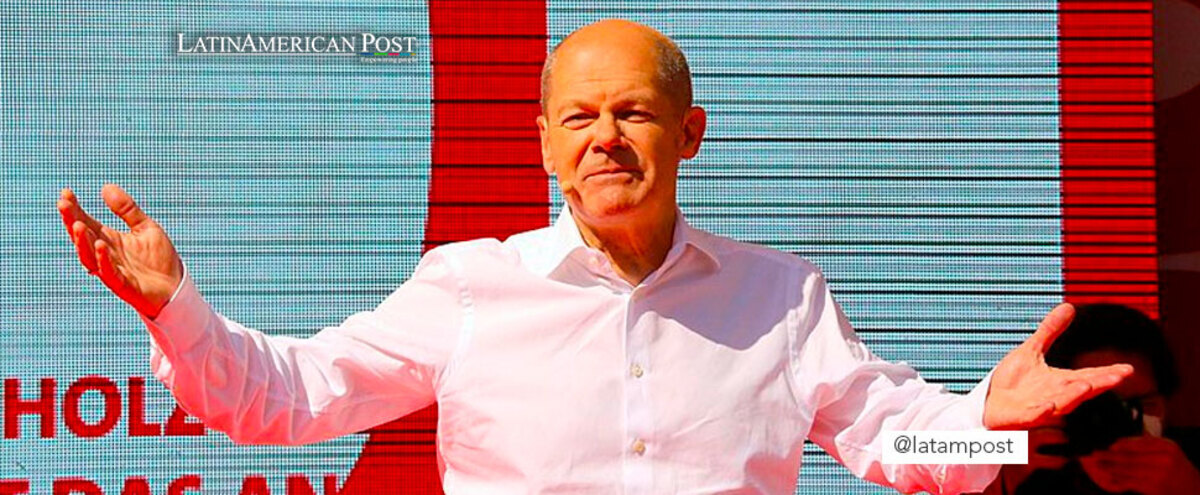German Chancellor, Olaf Scholz, broke gender equality in his cabinet. How other governments that promised gender parity in the cabinet have dealt with it?

Photo: Wikimedia-Michael Lucan
LatinAmerican Post | Santiago Gómez Hernández
Listen to this article
Leer en español: Gabinetes paritarios: ¿política de igualdad o propuesta de campaña?
7 years ago, when the Prime Minister of Canada announced a cabinet with equality between men and women, he drew the attention of the world. The political world saw in this decision of the liberal politician a path to equality and the inclusion of women in politics. After this measure by the Canadian, several governments throughout the world have decided to name an equal number of women and men in their cabinets.
However, is this a measure that has worked for the inclusion or participation of women in politics? Or was it a simple measure to attract attention, but has not achieved fundamental changes?
German Chancellor Olaf Scholz recently replaced Angela Merkel in charge of Europe's biggest economic powerhouse. The leader of the Social Democratic Party announced that, as a sign of his commitment to gender equality, he would have a parity cabinet. This was fulfilled, at least, at the beginning of his administration.
However, after the resignation of Christine Lambrecht as defense minister, Scholz broke the parity in his ministers and appointed Boris Pistorius as her replacement, who was serving as Lower Saxony's interior minister. Previously, 8 of the 15 ministers were women. Counting Scholz himself (as head of the ministers) there was a parity of 8 and 8. Now, with the change of Lambrecht for Pistorius, there are 9 men and 7 women.
You may also be interested:Iván Velásquez: the Minister Who Destabilizes Relations between Colombia and Guatemala
Scholz can still move his chess pieces and rebalance his cabinet to keep his campaign promise. However, there are other cases that show how governments that are inaugurated with a joint cabinet have fared.
Canada
Justin Trudeu seems to maintain his policy of parity in the cabinet. Since 2015, when he came to power and after several re-elections, he has maintained a fair share in his government. In his current government team, there are 19 women, out of 38 positions (including the prime minister). The balance would be unbalancing if Mark Holland, leader of the Government in the Chamber, is counted.
Latin America
In the Latin American and Caribbean region, parity in governments seems to be increasing, but it is still low. A CEPA L report, from a couple of years ago (which has yet to be updated with various governments), shows that the average participation of women in executive cabinets was barely 28.7%. Chile was the one with the highest participation (58%) and the Caribbean islands of Saint Vincent and the Grenadines, Belize and Montserrat the lowest, with 0% participation.
Chile
Chile is one of the pioneer countries in parity cabinets. Since the time of Michelle Bachelet, the president appointed 10 women and 10 men to be part of her first group of ministers. Today, President Gabriel Boric maintains and increases the commitment that Bachelet made at the time. When he arrived at the government, he announced 14 women and 10 men to occupy the ministries.
Today, despite several changes, resignations and new appointments, Boric has managed to keep not only the promise, but the number from 14 to 10 in his government.
Colombia
Another politician who recently promised a joint cabinet was Gustavo Petro. With nearly half a year in the Government, he keeps his promise, since he has not made any changes in this matter. However, it has been criticized for appointing (or possible appointing) people with complaints of harassment. This reason has caused many women to denounce him for a partial commitment to the feminist struggle.
Brazil
A new government formed earlier this year was that of the leftist Luiz Inacio Lula da Silva. Despite the fact that the participation of women increased compared to his predecessor, Jair Bolsonaro, parity is far away. Of the 30 ministries, there are only 11 women, plus the positions of president and vice president that are also held by men.
Mexico
Since AMLO's arrival, there have always been fewer women than men on his team. Initially, there were 12 men and 8 women. Throughout his administration, Andrés Manuel López Obrador has oscillated between 7 and 9 women, which he still maintains today (11 to 9). Despite the fact that it is close to parity, it is evident that it is not a policy or commitment of his government, but that it responds to accidental events.
Criticism of Parity Cabinets and Positive Discrimination
Despite the fact that today many defend the creation of gender and diverse party cabinets, there are also critical voices. The main argument is always related to meritocracy. It is argued that what positive discrimination policies do is privilege women who may not be equally qualified as some men.
However, it is important to understand that these positive discrimination measures have been created in a context of inequity and inequality. That women and minorities have historically been underrepresented is due to a system that prevented them from reaching positions of power. When a utopian (or almost utopian) society is reached, where there is no discrimination of any kind, positive discrimination measures will surely not be necessary. However, while it is still not achieved, any measure that tries to reduce this underrepresentation will be admired.




